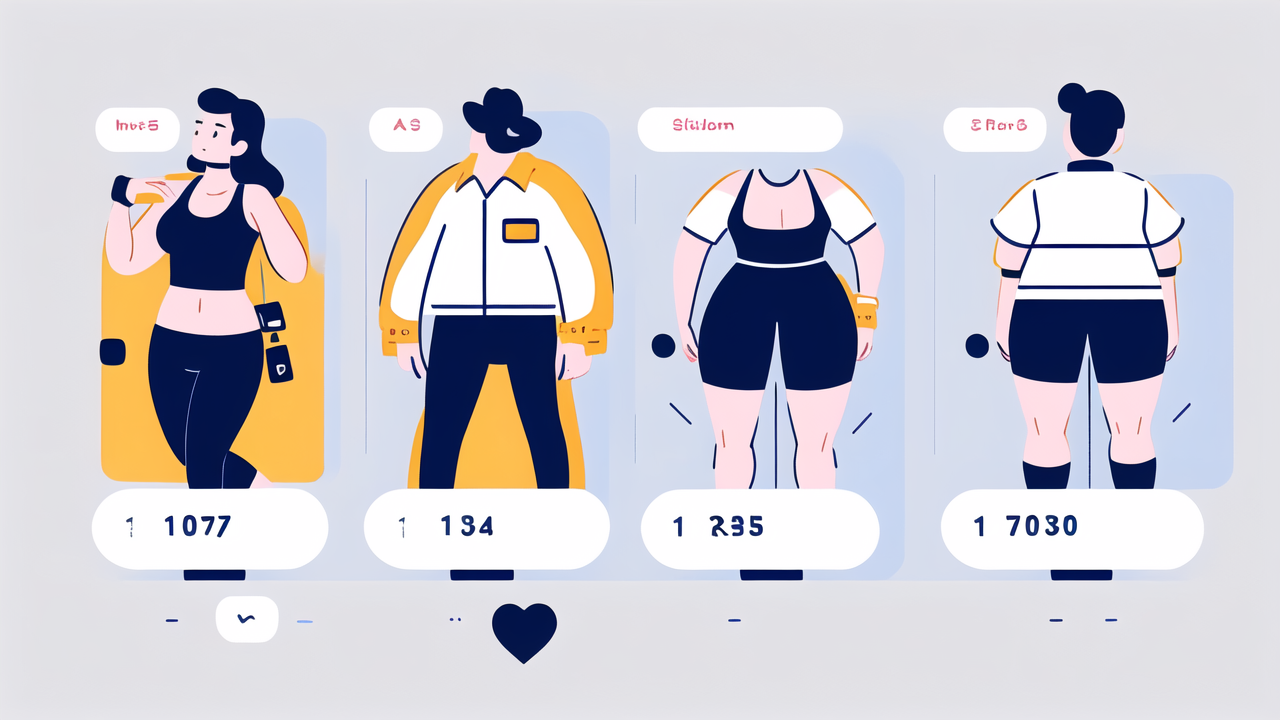Understanding the Importance of Body Measurement Tracking for Health and Fitness
The Role of Accurate Measurements in Fitness Regimens
Accurate body measurements are crucial for tracking fitness progress. They provide a clear picture of your current state. Smart watches offer precise data on various metrics. These include heart rate, steps taken, and calories burned.

With this info, you can set realistic goals and adjust your workouts. You'll know if you're making progress or need to change your approach. Smart watches also help you maintain consistency in your fitness routine.
They remind you to move and track your daily activity levels. This constant feedback keeps you motivated and accountable. It's like having a personal trainer on your wrist, guiding you towards your goals.
Long-Term Benefits of Tracking Body Metrics
Tracking body metrics over time offers numerous long-term benefits. It helps you understand your body's patterns and responses to different activities. You can see how diet changes affect your weight and body composition.
Smart watches can track sleep patterns, which is vital for overall health. Good sleep is key to recovery and performance. By monitoring these metrics, you can make informed decisions about your lifestyle.
Over time, you'll notice trends and correlations between your habits and health outcomes. This knowledge empowers you to make lasting changes. It's not just about short-term goals, but about creating a healthier lifestyle overall.
Top Smart Watches for Body Measurement Tracking
Features to Look for in a Fitness-Oriented Smartwatch
When choosing a smartwatch for fitness tracking, consider these key features:

- Accurate heart rate monitoring
- GPS for tracking outdoor activities
- Water resistance for swimming and showering
- Long battery life
- Compatibility with fitness apps
- Sleep tracking capabilities
- Stress monitoring
- Body composition analysis (on some models)
Look for a watch that offers comprehensive health insights. It should track various metrics and provide easy-to-understand data. The watch should also be comfortable to wear during workouts and daily activities.
Consider the display size and clarity, especially if you'll be checking it during exercises. The ability to customize watch faces and set fitness goals is also helpful.
Reviewing the Market Leaders: Apple Watch Series, Samsung Galaxy Watch Series, and Others
The Apple Watch Series is known for its comprehensive health tracking features. It offers ECG capabilities, fall detection, and integration with Apple Fitness+. The latest models include blood oxygen monitoring.
Samsung's Galaxy Watch series provides similar features. It excels in sleep tracking and offers a unique body composition analysis. This feature estimates body fat percentage and muscle mass.
Other notable options include:
- Fitbit Sense: Known for stress management features
- Garmin Fenix series: Ideal for outdoor enthusiasts and athletes
- Withings ScanWatch: Combines traditional watch design with health tracking
- Xiaomi Mi Band: A budget-friendly option with basic fitness tracking
Each brand has its strengths. Apple and Samsung integrate well with their respective ecosystems. Fitbit and Garmin offer more specialized fitness features. Consider your specific needs and budget when choosing.
Implementing Smart Watches into Your Fitness Routine
Integrating Smart Watches with Existing Fitness Apps and Platforms
Smart watches can enhance your fitness routine by integrating with popular apps and platforms. Most watches sync with smartphone apps like MyFitnessPal, Strava, or Nike Training Club. This integration allows for a more comprehensive view of your health and fitness data.

To get started:
- Choose compatible apps that align with your fitness goals
- Sync your smartwatch with these apps
- Set up data sharing permissions
- Use the combined data to track progress and set new goals
Many smartwatches also offer their own ecosystems. Apple's Health app and Samsung's Health app centralize data from various sources. This makes it easier to see all your health and fitness info in one place.
Remember to regularly check and analyze your data. This will help you stay on track and make informed decisions about your fitness journey.
Best Practices for Maximizing the Effectiveness of Body Measurement Tracking
To get the most out of your smartwatch for body measurement tracking:
- Wear it consistently: Put it on every day, even when you're not exercising
- Set realistic goals: Use the data to create achievable targets
- Update your info regularly: Keep your height, weight, and age current for accurate calculations
- Calibrate when needed: Follow manufacturer instructions to ensure accuracy
- Use all features: Explore sleep tracking, stress monitoring, and other health tools
- Review data weekly: Look for patterns and areas for improvement
- Combine with other tools: Use smart scales or body fat calipers for a fuller picture
- Stay charged: Keep your watch powered to avoid missing data
Don't obsess over daily fluctuations. Focus on long-term trends instead. Use the data as a guide, not a strict rule. Remember, overall health is more important than any single metric.
Lastly, consult with health professionals if you notice concerning trends. Smart watches are great tools, but they don't replace medical advice. Use them to support your journey to better health and fitness.




Leave a comment
This site is protected by hCaptcha and the hCaptcha Privacy Policy and Terms of Service apply.